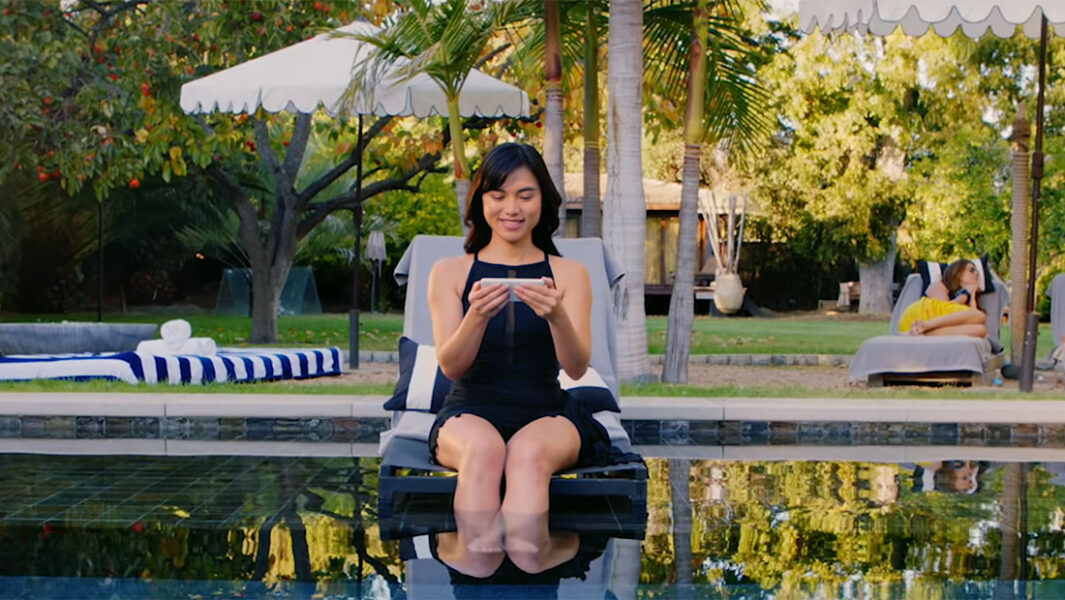

Quibi: Everything You Need To Know About Jeffrey Katzenberg’s New Short-Form Streaming Service
On Cartoon Brew, we’ve recently covered announcements to come out of Quibi, a forthcoming streaming service. Yesterday at Las Vegas’s CES trade show, the platform had its first public demonstration. Here’s what we learned, and what we can expect from the product.
What is Quibi?
A new short-form streaming service — and, according to its creators, a new way of watching video altogether. Designed exclusively for mobile devices, the platform will feed subscribers chunks of content, 5–10 minutes long. In other words, ideal for watching on the go. Quibi is led by veteran tech executive (and former Republican candidate for California governor) Meg Whitman and film mogul (and Dreamworks Animation co-founder) Jeffrey Katzenberg, who pitch their product as a marriage between Hollywood and Silicon Valley.
What kind of stuff will be on it?
There will be three categories of content. The prestige tier will consist of what are effectively movies, cut into short chapters that are delivered weekly. There will also be unscripted shows and documentaries about a wide variety of subjects. Finally, Daily Essentials: news reports and related content (like horoscopes). Three hours of new content will be rolled out every weekday, amounting to 175 original shows in the first year.
So it’s like Youtube, but you pay?
Kind of. Katzenberg and Whitman say that they are competing more with Youtube and social media than with the existing streamers, like Netflix. They argue that Quibi stands out for two reasons. Firstly, its roster of A-list stars and premium-quality shows (budgets run up to $125,000 per minute, which is on a par with top film and tv productions). Secondly, Turnstyle.
What the heck is that?
The Turnstyle technology was the big reveal of the CES presentation. The patent-pending tech allows viewers to switch seamlessly between portrait and landscape mode, which means that creators at least have to make two edits, and can even provide two simultaneous yet entirely different video streams (as in the demo below). Early reports suggest that the creators are already using the feature inventively, integrating the dual format into their storytelling.
One show. One screen. Two perspectives.
Hold the phone horizontally = Cinematic perspective.
Hold the phone vertically = The character’s phone takes over your phone. #QuibiCES pic.twitter.com/mANwJJKsGU— Quibi (@Quibi) January 8, 2020
Could Quibi shows exploit other phone features?
In theory, yes: imagine a character making a call, only for your phone to actually ring. In fact, Steven Spielberg’s horror series After Dark will make a modest use of viewers’ geolocation, ensuring that they can only watch the show after dark. Wider use of the phone is not really part of Quibi’s pitch for now, but it probably will be in the future, as it will help sell the platform as something qualitatively different from tv.
How good is the talent?
Pretty good — which is crucial, as Quibi is launching with no established franchises. Actors and filmmakers to have signed up so far include Zac Efron, Idris Elba, Kristen Bell, Chrissy Teigen, Kendall Jenner, Tyra Banks, Steph Curry, 50 Cent, Jennifer Lopez, Reese Witherspoon, Guillermo del Toro, Steven Soderbergh, and Avengers: Endgame directors Anthony and Joe Russo. Quibi does no in-house production; everything is outsourced.
And in animation?
To date, four animated series have been unveiled. They are Gloop World, a stop-motion show from Rick & Morty co-creator Justin Roiland; an adaptation of Anthony Piper’s superhero comic Trill League; Your Daily Horoscope, a narrative series featuring the zodiac animals; and The Andy Cohen Diaries, in which the titular writer-broadcaster shares anecdotes from his colorful life.
How will Quibi make money?
Advertising is projected to account for around a third of the company’s revenue, with the rest coming from subscriptions. User data won’t be monetized. The platform has raised $1.4 billion in funding from major investors (including the big Hollywood studios), and is aiming for 20 million subscribers within five years. Projects are licensed to Quibi for seven years, but creators can re-edit them as long-form films and sell them as such after two years.
When can I get it?
Quibi launches in the U.S. on April 6. An ad-supported subscription will cost $5, rising to $8 for ad-free.
(Image at top courtesy via Quibi launch video.)

.png)